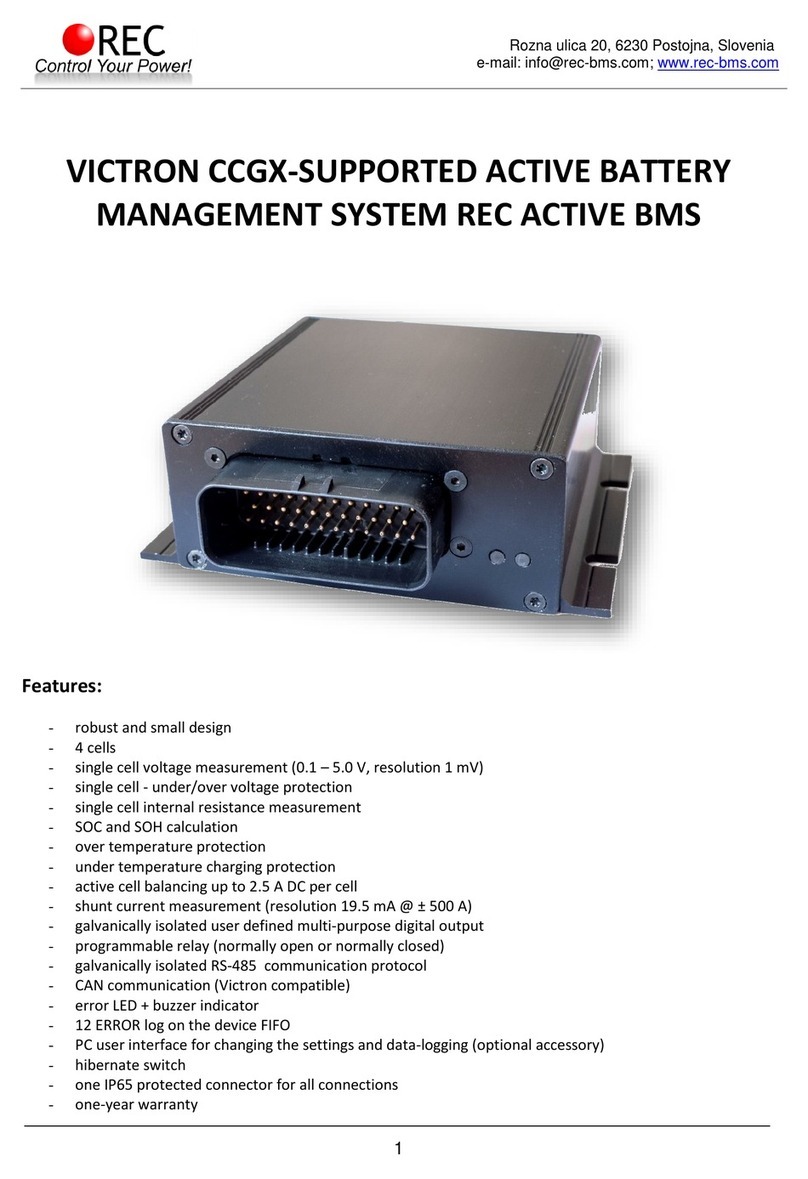
REC ACTIVE BMS 4S
8 www.rec-bms.com
'C','H','A','R', ' ','x.xx'
End of charging voltage per
cell
Returns float voltage [V]
'C','H','I','S', ' ','x.xx'
End of charging voltage
hysteresis per cell
Returns float voltage [V]
'I','O','F','F',' ','x.xx'
Current measurement zero
offset
Returns float current [A]
'T','B','A','L',' ','x.xx'
Max allowed BMS
temperature
Returns float temperature [°C]
'B','M','T','H',' ','x.xx'
Max allowed BMS
temperature hysteresis
Returns float temperature [°C]
'V','M','A','X',' ','xxx'
Number of exceeded value of
CMAX
'V','M','I','N',' ','xxx'
Number of exceeded value of
CMIN
'C','Y','C','L',' ','xxx'
Number of battery pack
cycles
'C','A','P','A',' ','x.xx'
Returns float capacity [Ah]
'I','O','J','A',' ','x.xx'
Voltage to current coefficient
'R','A','Z','L',' ','x.xx'
Returns float voltage [V]
'C','H','E','M', ' ','xxx'
Returns unsigned char value
'S','O','C','H','?'/
'S','O','C','H',' ','x.xx'
Returns float value 0 - 0.99
'S','O','C','S','?'/
'S','O','C','S',' ','x.xx'
Returns float value 0 –1.0
Parameter accepted and changed value is responded with 'SET' answer.
Example: proper byte message for 'LCD1?' instruction for BMS address 1 is:
<0x55><0x02><0x00><0x05><0x4C><0x43><0x44><0x31><0x3F><0x53><0x90><0xAA>
RS-485 message are executed when the microprocessor is not in interrupt routine so a timeout of 350 ms should
be set for the answer to arrive. If the timeout occurs the message should be sent again. If an array of data is sent
little endian is used for float or integer values. In case of single data is sent ASCII characters are used e.g. -1.2351e2
Custom made instructions can be added to the list to log or set the parameters that control the BMS algorithm or
its outputs.




























